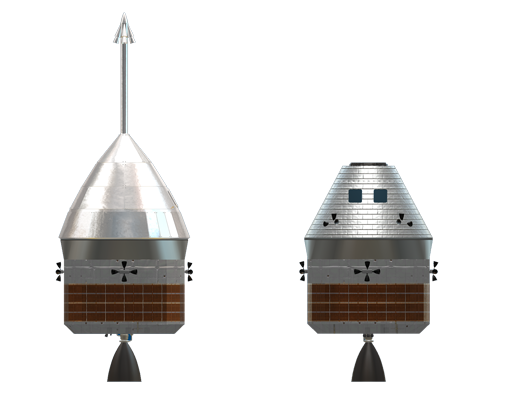Lynx Spacecraft

The concept for the Lynx crew system was to utilize the same crew cabin for both an orbital spacecraft that would reenter as well as a lander for the Moon and Mars. This would simplify development costs, which are extremely expensive for crewed vehicles. In order to use a shared cabin, the Lynx has an additional shell for the reentry spacecraft for heat protection (in addition to the ablative heatshield, of course).
The service module for the orbital spacecraft also uses the same ED-7 engine, RCS, and tanks as the lander, though the lander lacks the additional solar panel and radiator structure. The Lynx service module uses methane and oxygen and has the same capability as the Apollo service module – capable of pulling a lander into a low orbit around the Moon and also departing back to Earth.
Diameter: 5 meters orbiter; 4 meters lander cabin
Mass
Landing Cabin: 3.01 tons
Full Orbital Module: 7.1 tons
Orbiter and Service Module: 22.342 tons wet
9.289 tons dry
Service Module Engine: 1 x ED-7
47.4 kN thrust
358 s ISP vacuum
CH4 and LOX
RCS thrust: 223 N x 16 ports on service module
223 N x 12 ports on cabin/orbiter
6992 liters liquid methane
8832 liters liquid oxygen
Solar power (one side): 2.73 kilowatts
